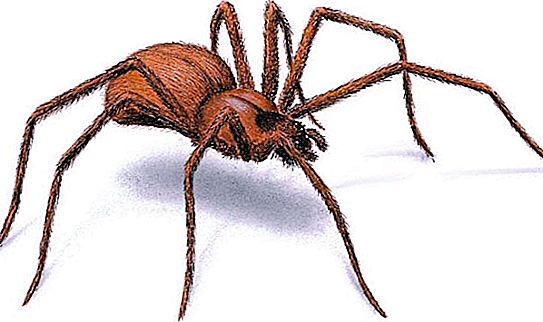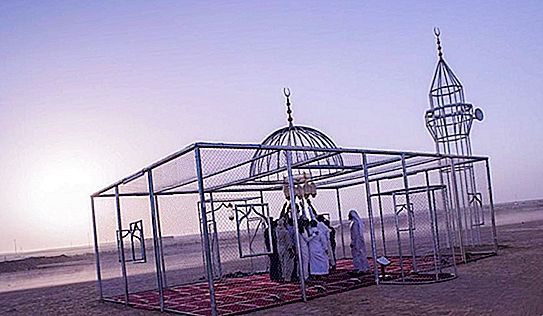Recently, many owners of country houses and summer cottages are increasingly paying attention to open water bodies where you can fish or just have a good time organizing a picnic on the beach. However, in the spring they can expect a very unpleasant surprise in the form of fish thrown ashore. It is worthwhile to understand in more detail when fish freeze most often.
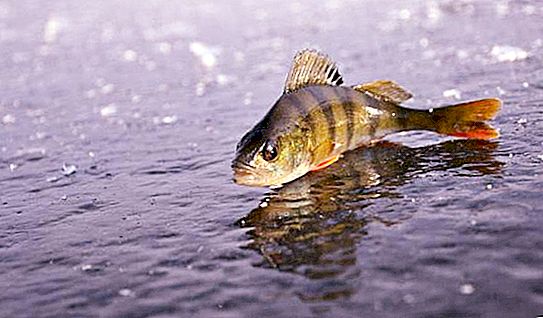
A tragedy of this kind occurs predominantly in frosty winters when, under a thick layer of snow and ice, various living creatures begin to perish at a slow but inevitable pace - floating bugs, dragonfly larvae and decorative, expensive species of aquatic inhabitants. Often, fish mortality is noticeable after ice melts, when a mass of semi-decomposed corpses of fish appears near the coast. But oxygen starvation occurs in living organisms in late February - early March, since dissolved oxygen is already absorbed, and fresh has not yet arrived. The harsher the winter, the worse the consequences.
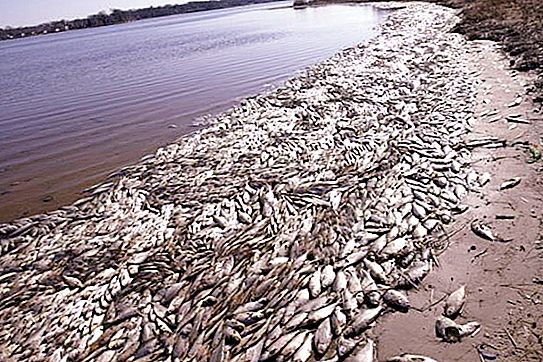
Mankind knows several reasons why fish freeze in winter.
What can negatively affect the life of fish in winter
- Insufficient access to oxygen (or even its absence) during surface aeration under a layer of ice. In addition, oxygen is consumed not only by fish, but also by the decaying mass of zoo- and phytoplankton, which accumulated over the summer.
- The death of a significant amount of algae with a decrease in air temperature (even the remaining vegetation cannot generate enough oxygen during photosynthesis in cold conditions and in low light).
- Water pollution by industrial or municipal waste, sewage.
- Poisoning of the natural habitat of fish due to harmful gases remaining under the ice layer (carbon dioxide and carbon monoxide or methane and hydrogen sulfide, etc.). All these clusters also reduce the level of dissolved oxygen in the water.
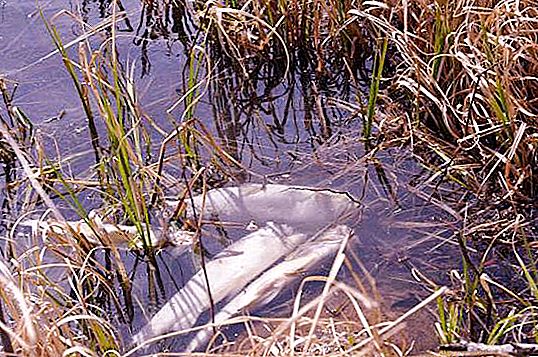
The only advantage of cold weather for freshwater can be slow breathing and decay. But the excess in the pond of the expendable part of the oxygen balance over the incoming one inevitably leads to such a phenomenon as fish freezing.
How to save fish from death in the winter
Despite the fact that winter killing of fish is a rather serious problem, it can be solved in fairly simple ways. It is enough to install an aerator in the pond, and for small ponds, a compressor with the function of air atomization is perfect. However, a conventional sprayer will not provide sufficient circulation if the area of the pond exceeds at least one tenth of a hectare. In this case, the appearance of local overseas zones is inevitable. Therefore, owners of large enclosed bodies of water are advised to install special aerators, flow-forming, which will not only saturate the water with oxygen, but also create the effect of a steady flow, mixing the entire water column.
How to determine the level of oxygen in water
Anyone who wants to know the exact temperature of the water and its degree of oxygen saturation can do this with a thermooximeter. Also, this device will help to save electricity, because with sufficient saturation of water, the need to turn on the aerator will not arise. It is important to know that fish freezing begins when oxygen levels drop to 6–7 mg / L (approximately 50 to 60% of normal saturation). Experts recommend purchasing a thermo-oximeter with a maintenance-free probe and a sufficiently long cable (at least 3-5 m).
How to save fish from freezing if there is no aerator
Many experienced owners of ponds know - when fish freeze begins, it is important to make wormwood in time, thereby ensuring that oxygen enters the water. To do this, it is enough to periodically (at least twice a week) chop or break the ice. It is also advisable to freeze in the openings sheaves of reeds, reeds, straw. You can use a pump (fountain pump) that pumps water under the thickness of the ice. This method will be very convenient for those who live far enough and are not able to often come to the reservoir.

It is worth noting that experts are skeptical of folk methods of saving fish from overseas. They assure that the effect of them is only psychotherapeutic, since the ice-holes are needed exclusively for observing the behavior of underwater inhabitants in the winter (in closed reservoirs at the bottom it turns out to consider dead individuals).

In addition, the usefulness of “bald spots” in ice may give an erroneous impression for the reason that initially, during a dead fish, the fish desperately strives for air, after which it disappears somewhere, supposedly “breathing out”. In fact, she is simply dying or looking for safer places. The opinion is reinforced by the identification of live individuals in spring and summer.
What is important to pay attention to to avoid freezing
Also, in winter, fish mortality can begin due to invasive diseases (chylodonellosis, ichthyophthyroidism, trichodiniasis) or infectious (pseudomonosis). To ensure a safe wintering will help and water exchange, which improves the habitat of fish. In addition, it is important to pay attention to the minimum permissible depth of the reservoir - it should be at least 2 meters. Treat the pond with quicklime before wintering (about 100 kg per hectare) and do laboratory analysis of the source water that feeds the pond. The results obtained must be carefully studied and compared with the norms established for water in fishery reservoirs.
Do I need to feed the fish in winter
At low temperatures, the fish easily tolerates starvation, so you do not need to feed it. Moreover, the remnants of the feed can decompose at the bottom and cause harm. But the exception is trout - it absorbs a small amount of food at a water temperature above +2 degrees. It is recommended to feed in moderation several times a week. It is recommended to stop giving food on condition of passive eating. It is better to install a special feeder, thanks to which the fish independently selects the feeding time and the amount of food.


